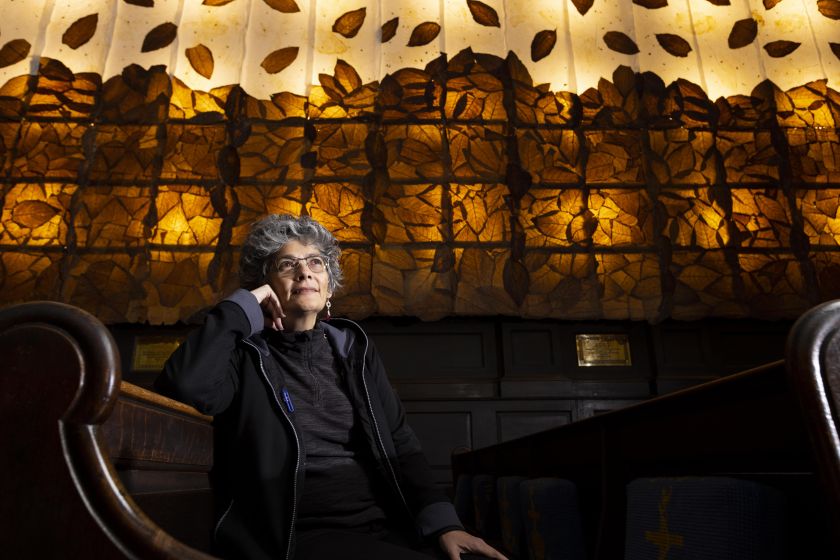
Lidia León. Photography by David Parry
As we start to reconsider what public space means in a world of chaos, Lidia León’s Conexión has become immensely timely. We chat with the artist-architect about the thinking behind the installation.
Art has been traditionally described as holding up a mirror to the world. But it can do more than that. It can also make us consider how that world might be transformed for the better. And Conexión, an installation by opening shortly in London, takes that notion and runs with it.
Conexión was originally made for the 2021 International Architecture Exhibition in Venice to answer curator Hashim Sarkis’s question, “How will we live together?”. It’s a profound question indeed.
While societies in the East remain largely centred around the group and community, in the West, our lives have been more and more atomised and separate. This was taken to extremes during the pandemic, with individuals forcibly isolated from each other for months on end.
At the same time, we’re starting to think more about collective space again, both in small ways – such as councils opening ‘warm spaces’ during the energy crisis – and large, such as seeing the environment as a global collective space we all have responsibility for.
Seen in this light, Lidia León’s Conexión is arguably the most important art exhibition happening in London right now.
Full of symbolism
Born in 1962, Lidia León is an artist-architect from the Dominican Republic who works on the interconnection between science, nature and spirituality; by revealing the link between the intangible and the visible.
This latest installation, curated by in partnership with the , has transformed in central London.
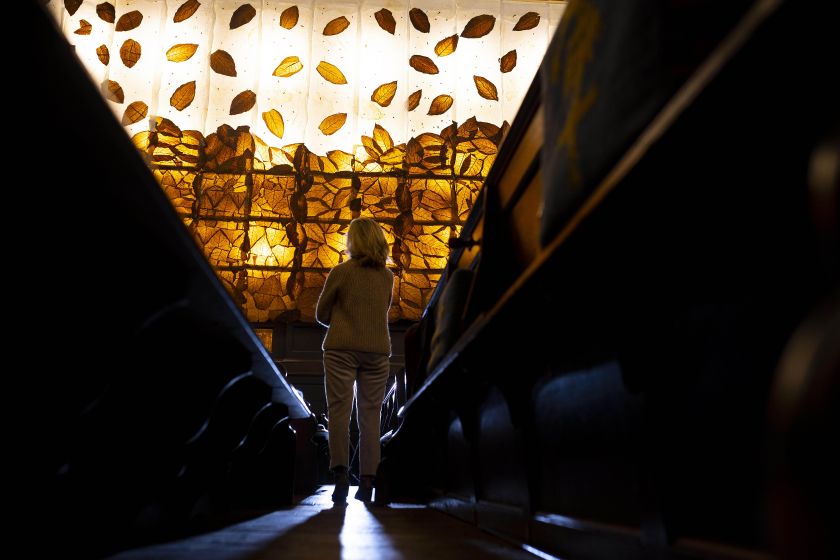
© David Parry
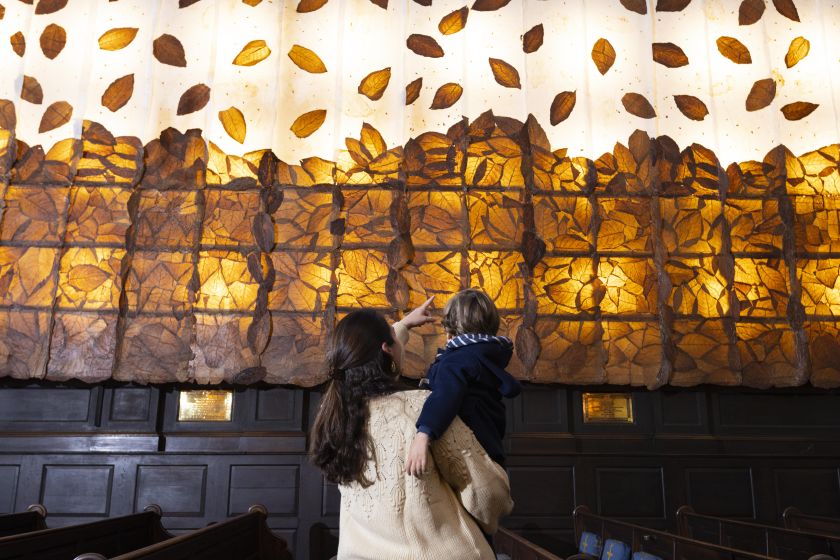
© David Parry
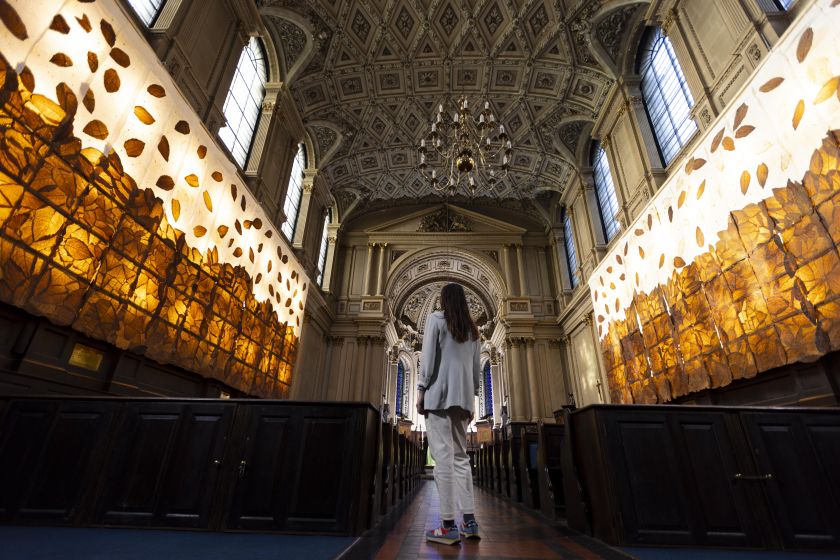
© David Parry
Conexión essentially reproduces an autumn garden inside the church, constructed from tobacco leaves from the Caribbean. Full of symbolism, inspired by the wabi-sabi philosophy and our bond with Mother Earth, this is a dynamic space in which visitors can find a connection with nature and consider how we can build a sustainable future.
It’s accompanied by multimedia contributions that aim to address issues related to territory, society, urban planning, tourism, creativity, habitat and sustainability.
Symbolic meaning
So what, exactly, does it symbolise? “Conexión shares the diversity of our culture through the colours, aromas, and textures of tobacco leaves,” Lidia explains. “Using the collage technique, I was able to present the power and beauty of unity, despite the fragility of a simple leaf. Together is how we can live a better and healthier life.”
Because Lidia firmly believes that architecture has the power to transform our relationship with our surroundings for a better coexistence. In this way, “Conexión invites us to rediscover the purpose of architecture and does so by presenting a space in which we can see ourselves reflected in different ways: integrating diversity; accepting impermanence, the beauty of the imperfect; celebrating wabi-sabi and our bond with mother nature and the roots of our own ancestry.”
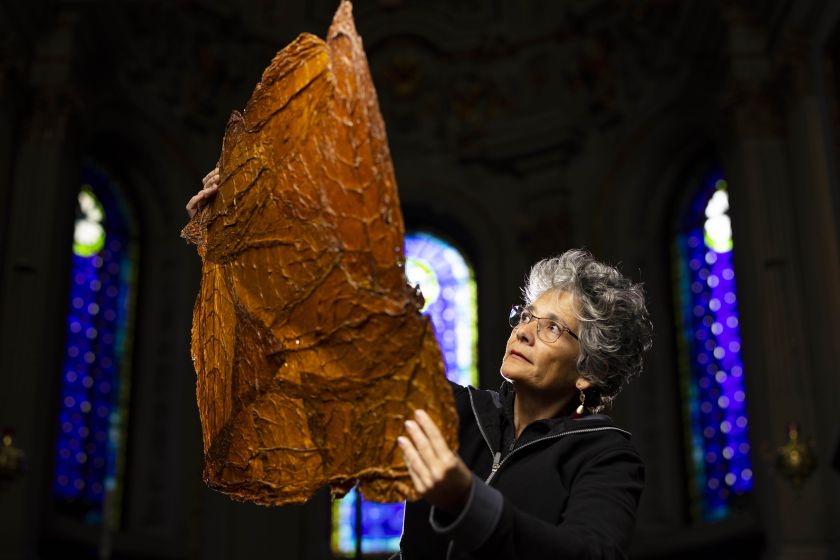
© David Parry
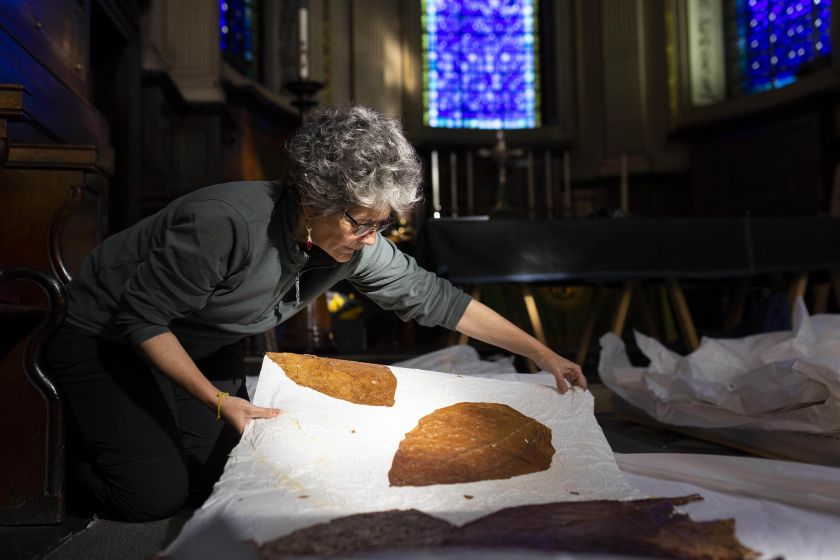
© David Parry
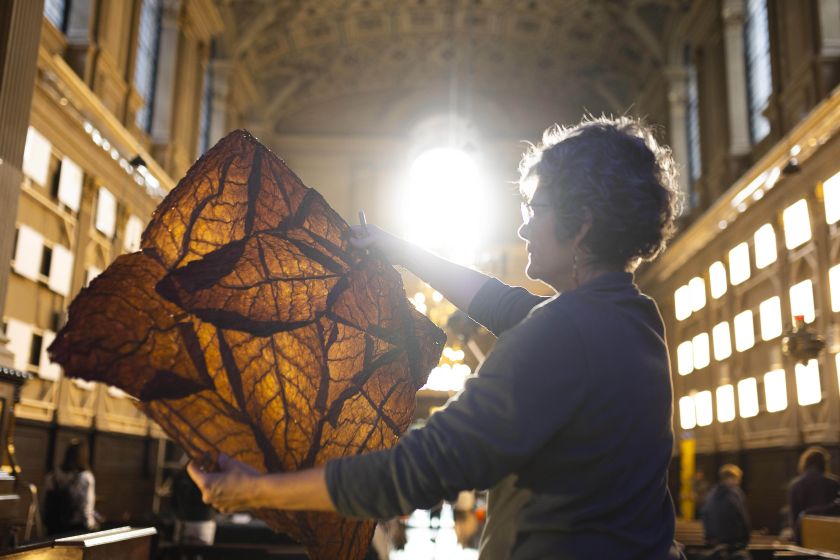
© David Parry
Prevalent throughout Japanese art, wabi-sabi is a worldview centred on the acceptance of transience and imperfection. The main idea is that everything in life is imperfect, impermanent, and incomplete – and that’s okay. It’s a jarring thought to many in the West, where perfection is held up as an ideal but has a lot to teach us in these current times of chaos and uncertainty.
Constant change
“Wabi-sabi has made me more aware of impermanence; that even if some changes are imperceptible, everything is in constant change,” Lidia explains. And that applies to the installation itself, which has evolved since it first went on show in Vienna last year.
“It has been nearly two years since I started working on this project, and the tobacco panels are not the same; neither am I,” says Lidia. “For the first time, Conexión is elevated over our head, creating a more ‘monumental’ look, but at the same time more intimate because of the smaller space of St Mary. It’s also been fitting to install the work in London in October. The installation creates a glowing autumn garden inside the church, reflecting the change in seasons outside.”
But despite the changes, the key message of the piece remains the same. “Conexión is an invitation to heal ourselves and our relationship with planet Earth in order to live in harmony and survive as a species,” Lidia explains.
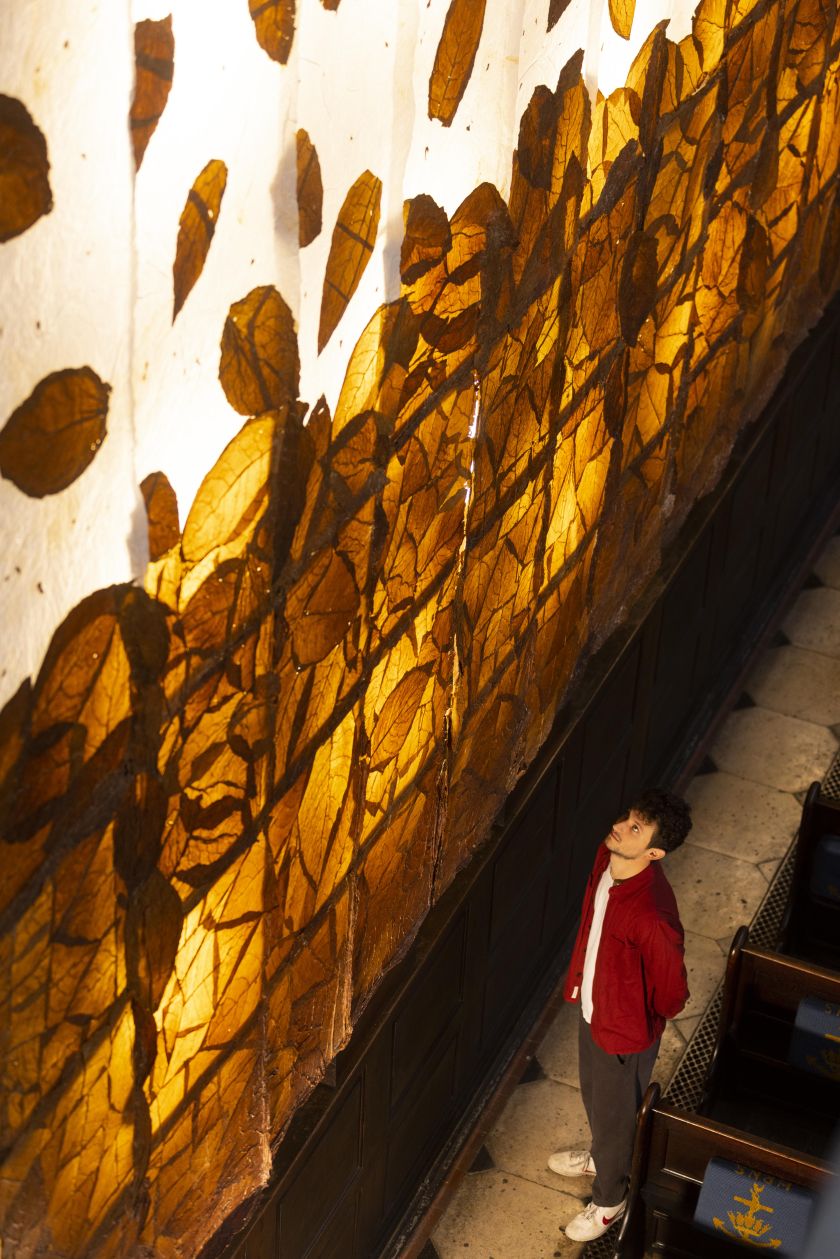
© David Parry
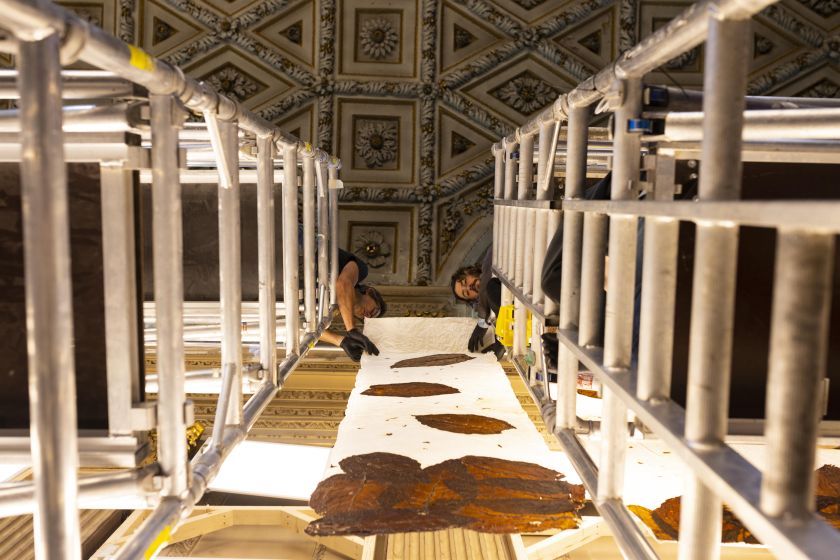
© David Parry
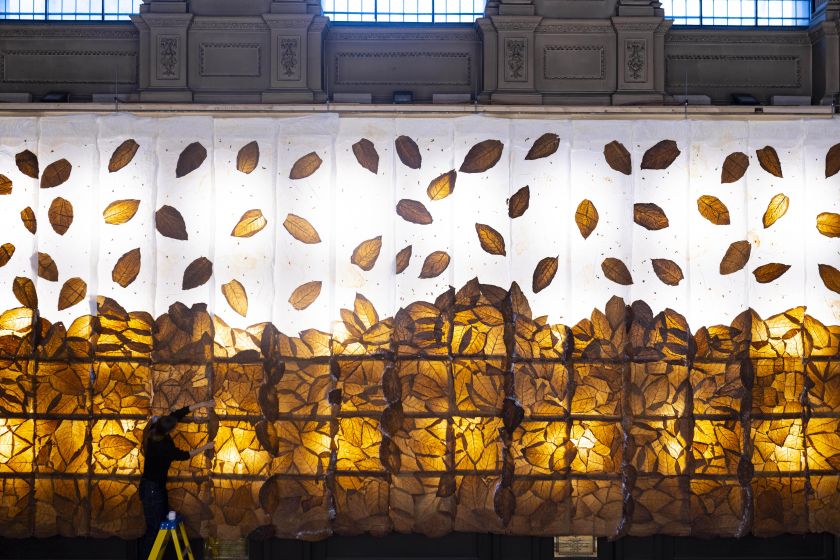
© David Parry
“Connecting with creative energy, we recognise ourselves as part of creation. We are Mother Earth; if we take care of her, the universe takes care of us. This awareness can be achievable at different levels, depending on the process of each person. The purpose of Conexión is to invite and motivate visitors to have their own experience.”
Interconnected reality
It’s undeniable that we in the West have lost touch with nature over the years, but the answer goes beyond just taking more strolls in the park; it goes deeper than that. “I may say my work reaffirms that I reflect a collective reality greater than my own,” says Lidia. “It reveals that we are interconnected, like drops of the same ocean. It stimulates visitors to discover what is beyond a simple glance, bringing humans and nature into communication. Climate crisis is a reflection of human crisis, and art will always express our own evolution.”
It’s a philosophy that’s driven Lidia throughout her career. “Since my childhood, nature has been my inspiration,” she recalls. “Long periods of silence have sharpened my senses, allowing me to discover what is beyond a simple glance. Through art, I discovered the bridge between nature, science and spirituality. Art fades away the boundaries of time and space, evoking endless connections into the present. Conexión is part of my ‘Wabi Sabi’ series and has personally deepened my family and spiritual roots.”
The power of plants
So why tobacco, specifically? “I was raised in a family of tobacco farmers,” she explains. “While caressing the tobacco leaves with gel, their aroma and ‘honey’ awaken the stories of my grandfather in the field. Witnessing the natural decomposition and transformation processes of matter, I discover the ephemeral substance, which we are made of; I connected with my origins, the earth.”
“The Dominican Republic is part of the Caribbean and rich in natural reserves,” she adds. “As an artist, I have been able to work with several natural materials; for example, sand from Sosua beach on the north coast and salt from Bani’s mines in the south part of the island. In particular, tobacco leaves a link to our roots and development as a country since the native Tainos used tobacco plants for medicine and spiritual rituals.”
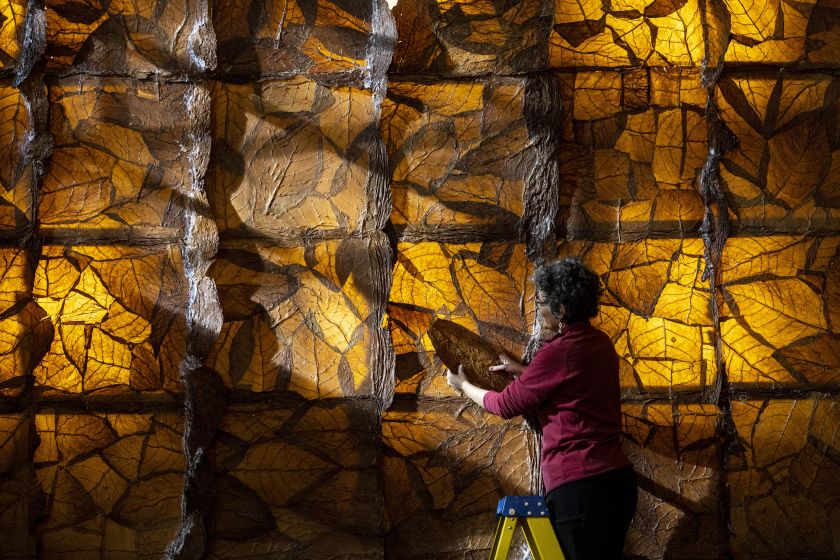
© David Parry
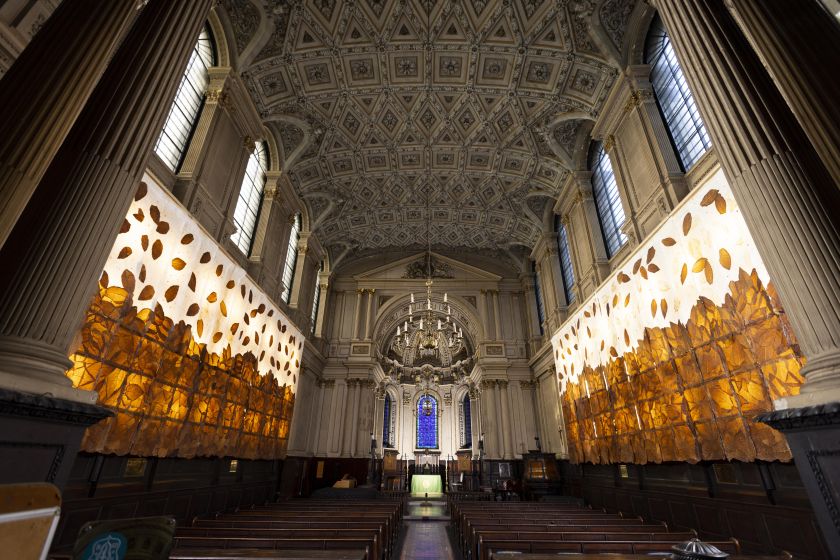
© David Parry
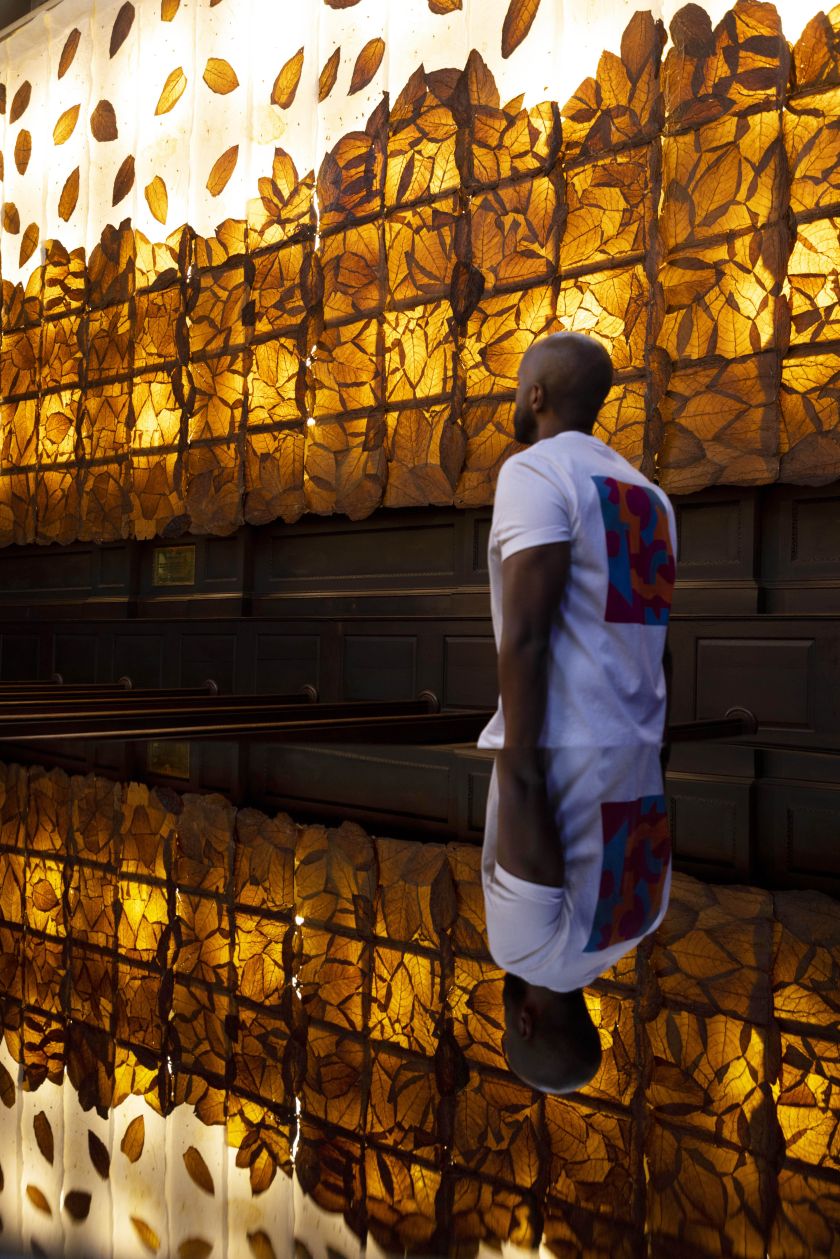
© David Parry
And lest you dismiss ancient traditions as irrelevant in today’s world, consider this. “A recent study by the California Institute of Technology discovered that the cells of tobacco plants are extremely strong,” Lidia points out. “They have mechanical properties similar to wood and superior to those of plastic of equal density. This suggests they could be relied upon as a sustainable raw material in building and construction in the future.”
Conexión by LiLeón is at St. Mary Le Strand in the centre of London (at the East end of the Strand, near Somerset House and the Strand campus of King’s College London) from now until 11 December 2022. You can follow Lidia on Instagram .